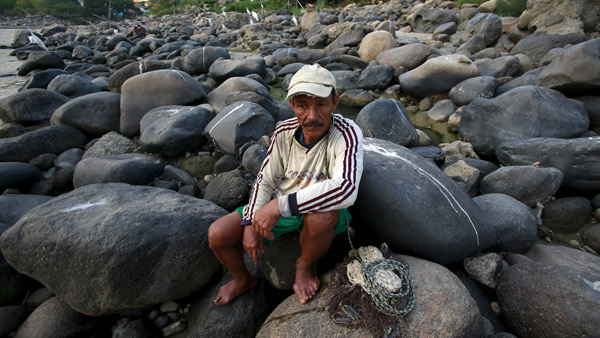 |
|
Fisherman Hector Alvarado sits on rocks that were once covered by the waters of the Magdalena river, the longest and most important river in Colombia, in the city of Honda, Colombia January 14, 2016. [Photo/Agencies] |
During the day, however, the mercury has swung to the opposite extreme, with a record-breaking high of 45 degrees Celsius registered for Dec. 29 in Puerto Salgar, Cundinamarca.
In the capital Bogota, one of the country's colder spots, mid-January temperatures rose to 23 degrees Celsius, 10 degrees warmer than average.
Farther south, in Bolivia, El Nino has brought hail, flash floods and drought, while sending the seasonal rains expected this time of the year over to neighboring Brazil.
According to government sources, since November El Nino has led to 14 deaths, left some 20,000 families homeless, destroyed 5,500 hectares of crops and caused damage in 78 of the country's 339 cities.
The phenomenon also threatens 1.4 million heads of cattle and other livestock across five departments.
"The problem is that now El Nino is threatening drought, which has begun to damage crops. We hope the weather reaches some kind of balance to avoid the greater loss of agricultural production," Rural Development and Land Minister Cesar Cocarico told Xinhua.
The World Meteorological Organization (WMO) expects this El Nino to be among the four strongest registered in the past 65 years.
For Bolivia, the government has prepared contingency plans to attend to some 100,000 families, but to date only 20,000 families have been directly affected by extreme weather, the Civil Defense agency said.
The ripple effects, however, may reach many more people.
Andean mountain communities in Ecuador, Peru and Bolivia are set to see more drought.
A lack of water is also affecting South America's electricity generation, due to insufficient water at hydropower plants, the main source of electric energy in Colombia, Brazil and Venezuela.
Lower energy production could in turn affect production and eat away at Latin America's gross domestic production (GDP) in 2016.